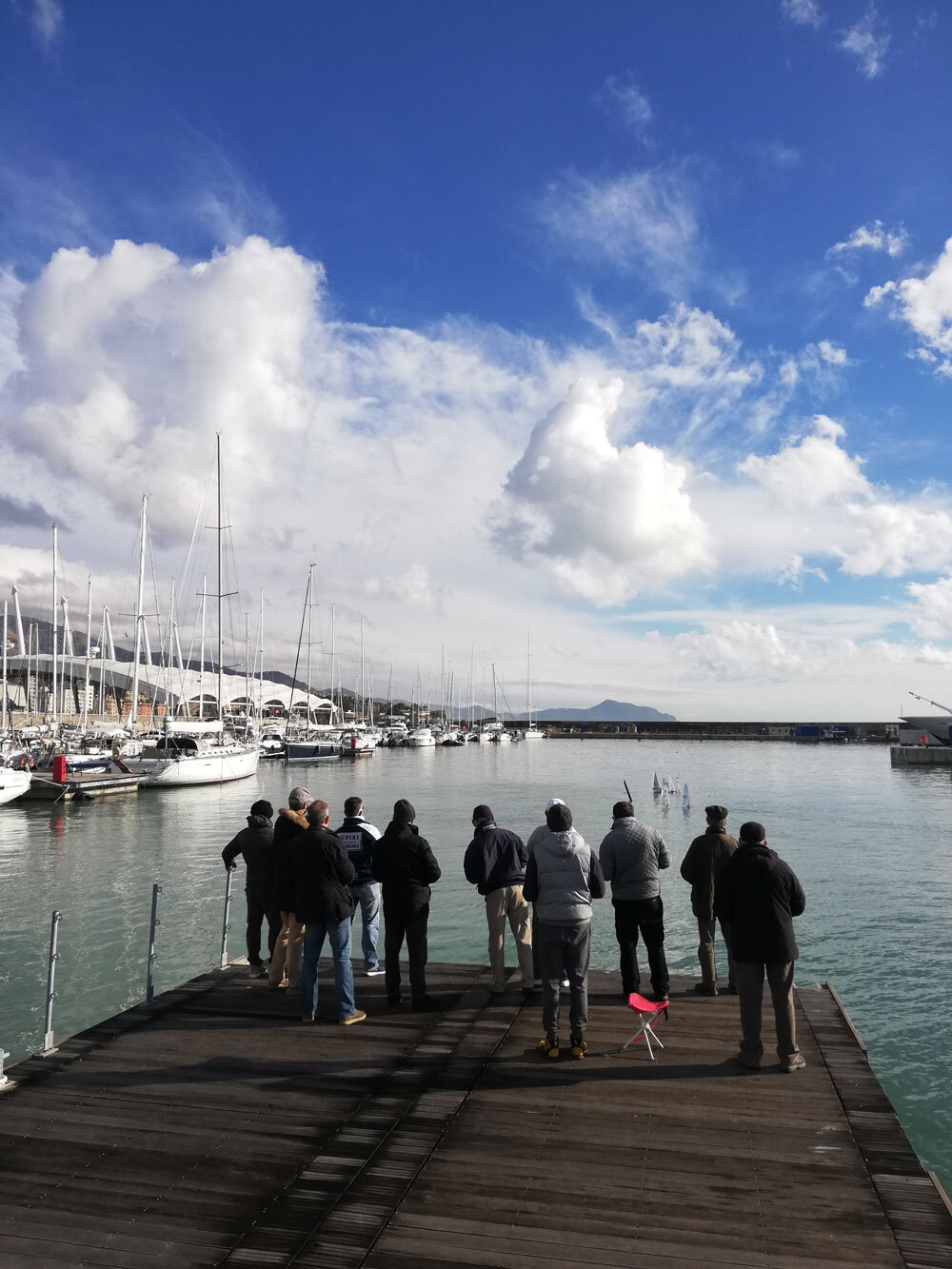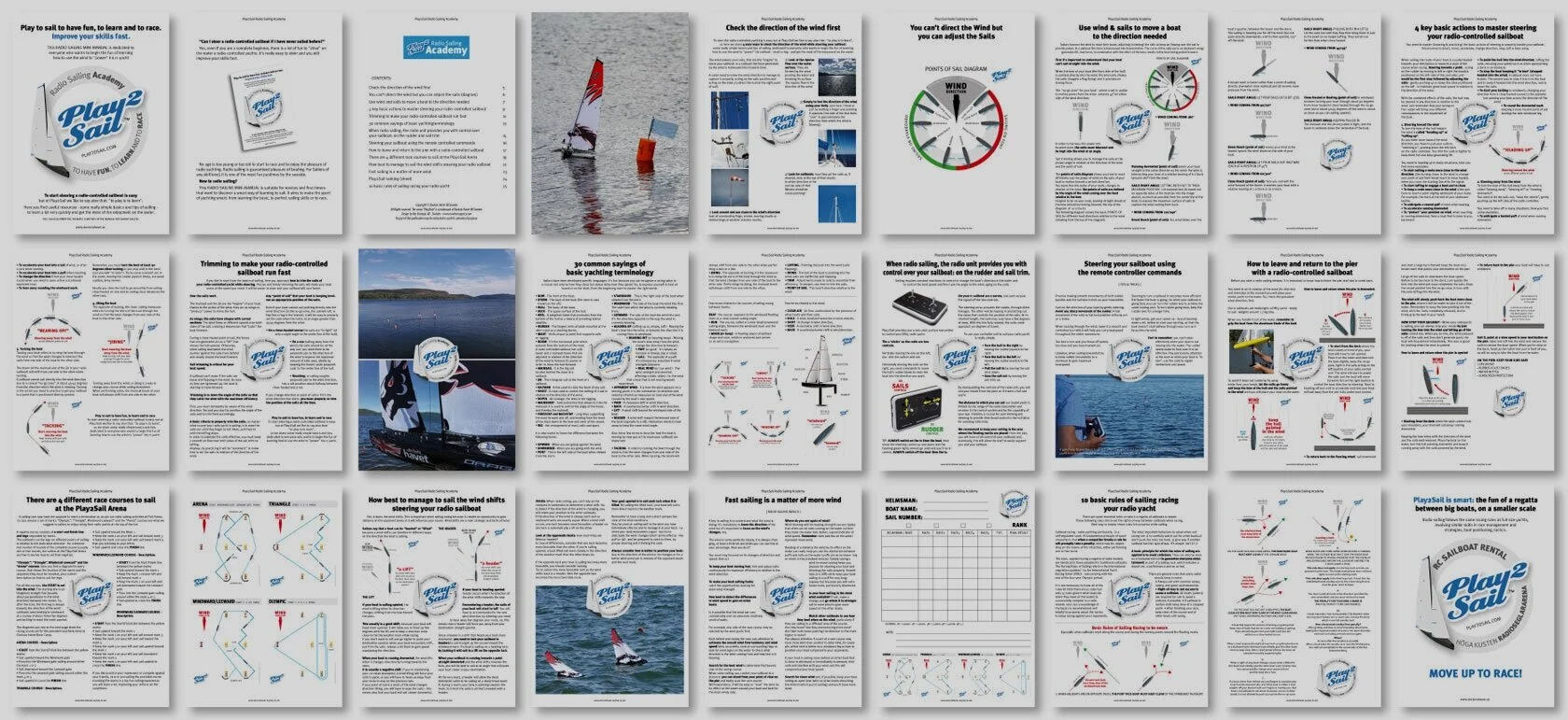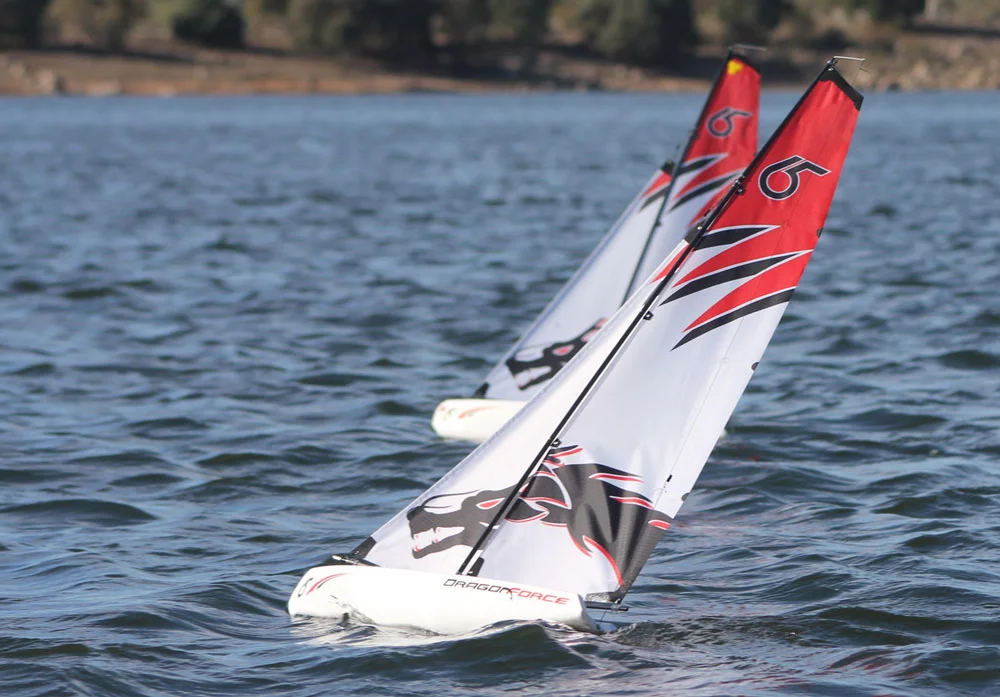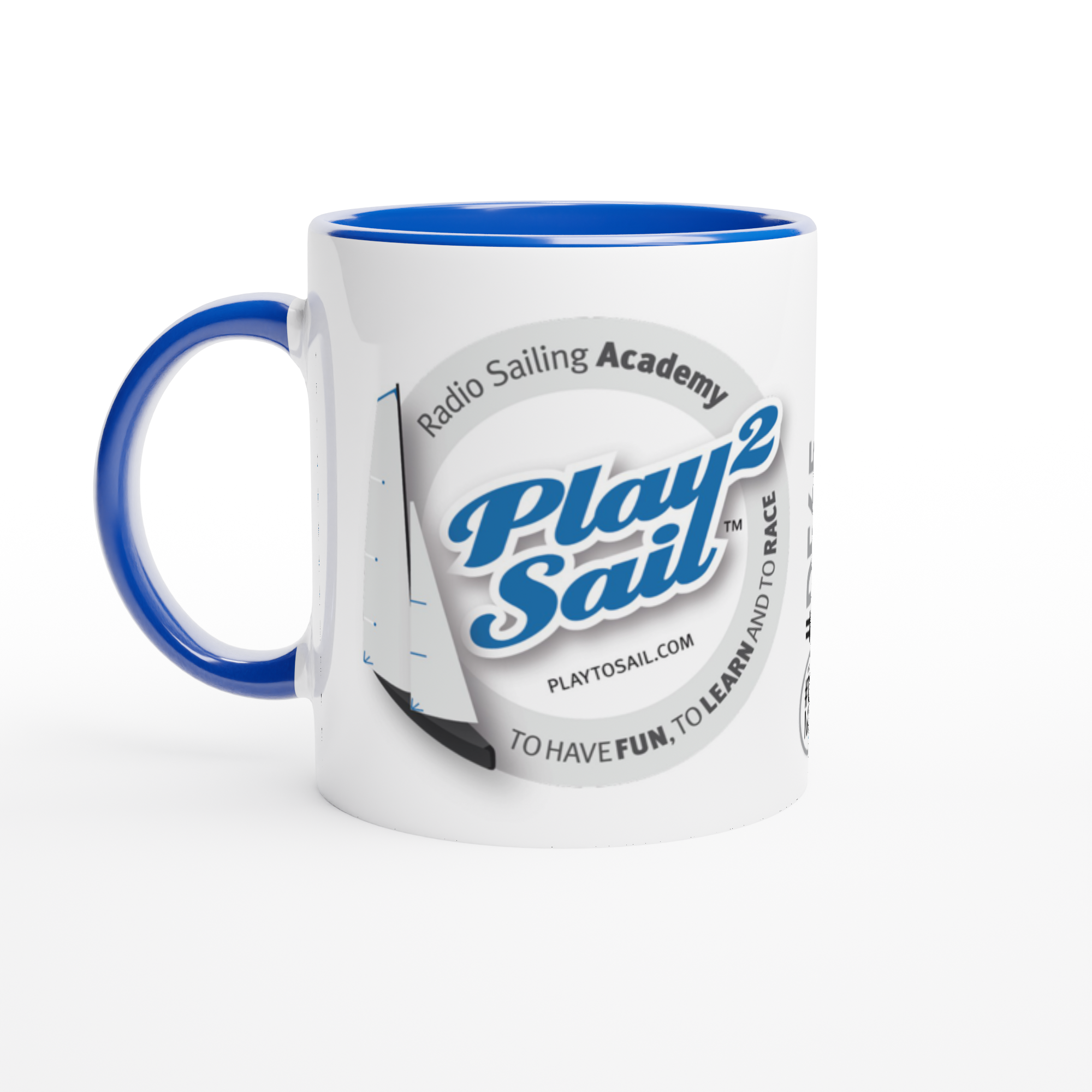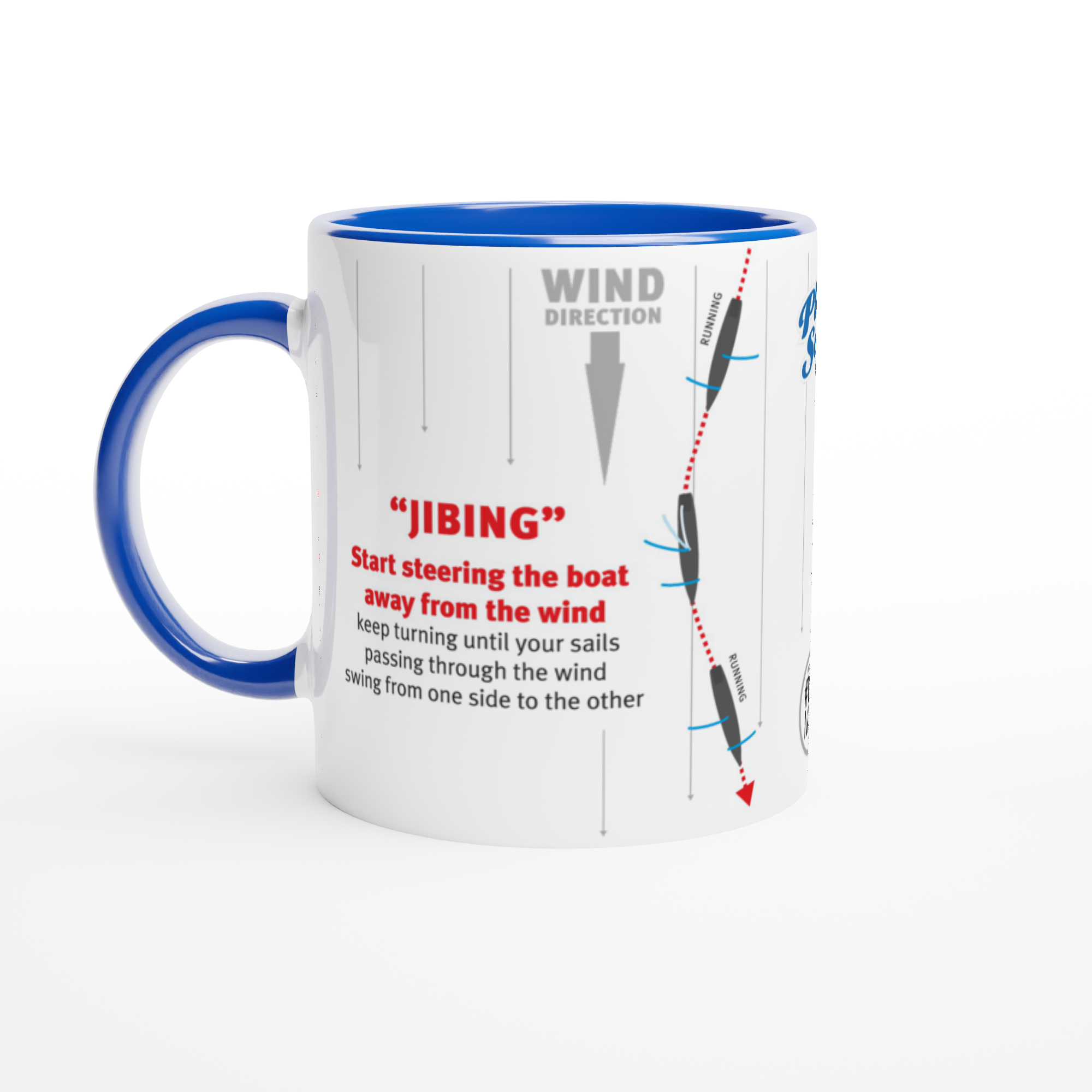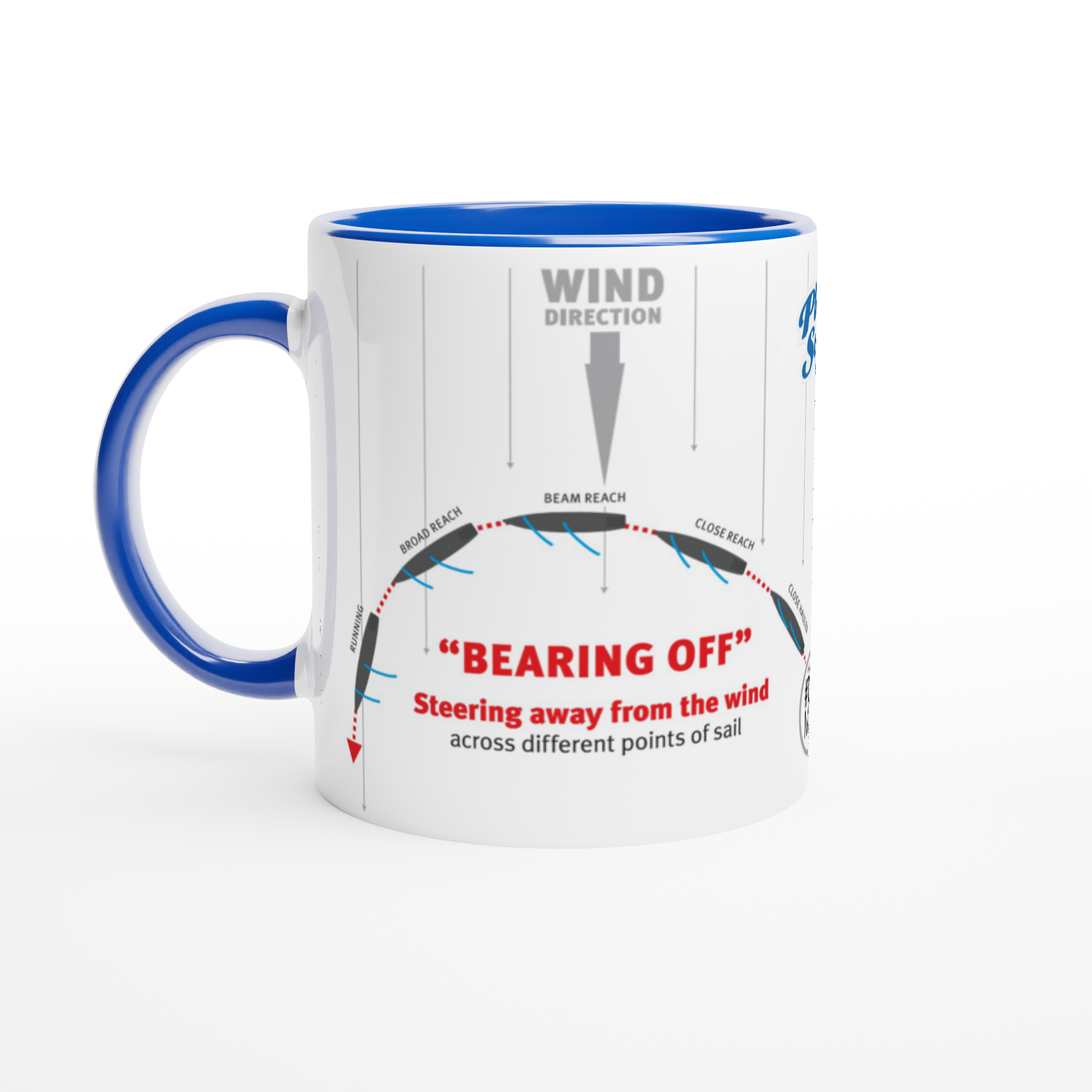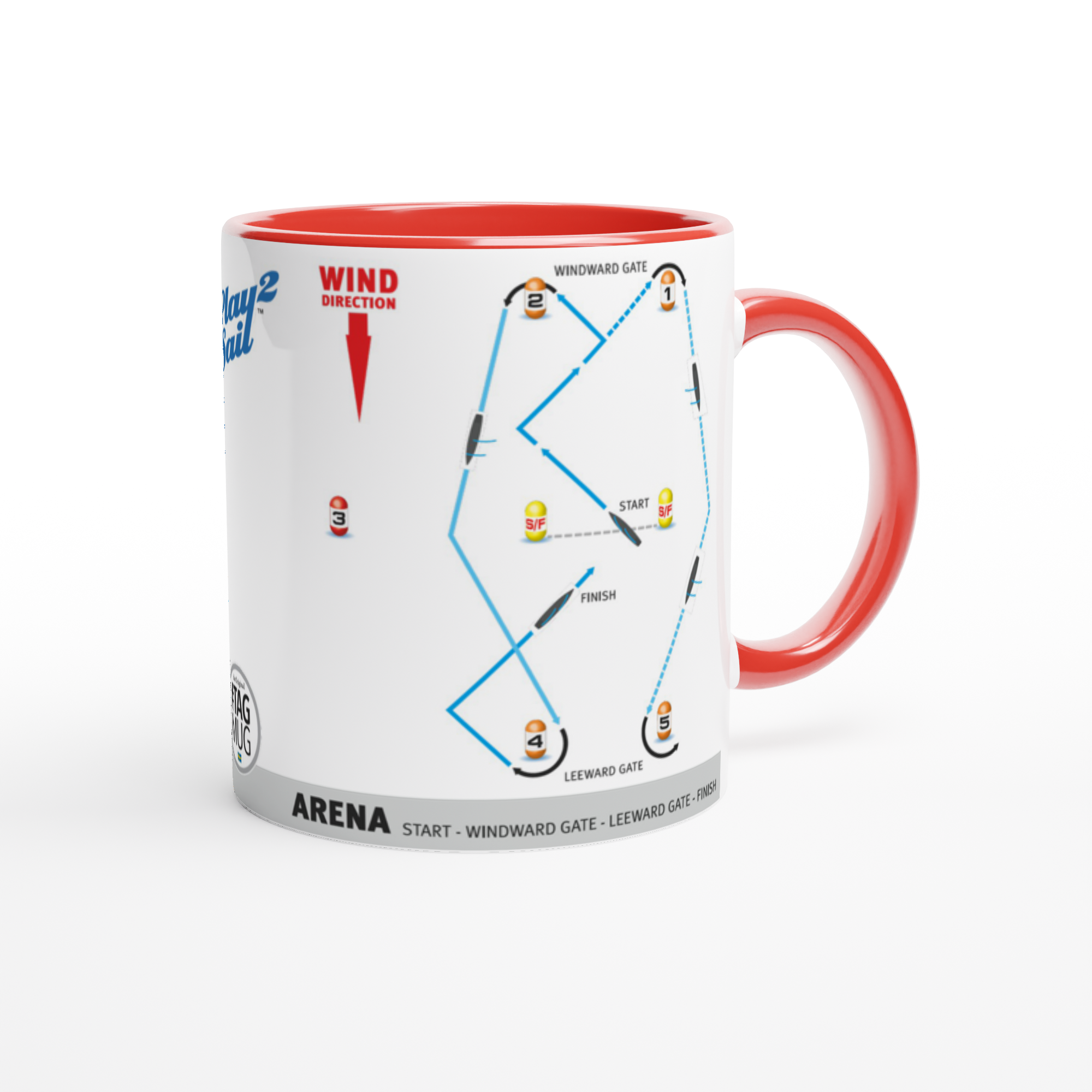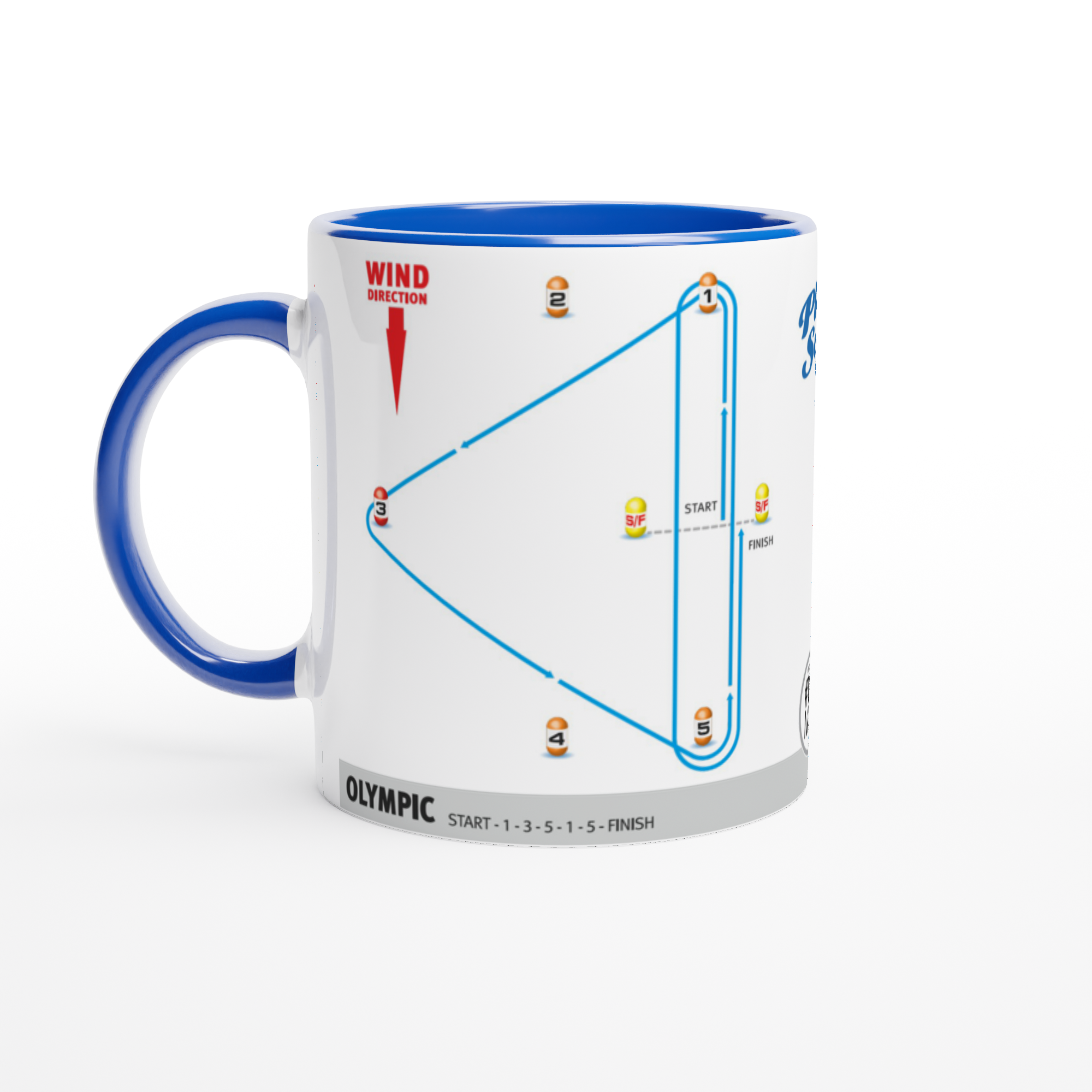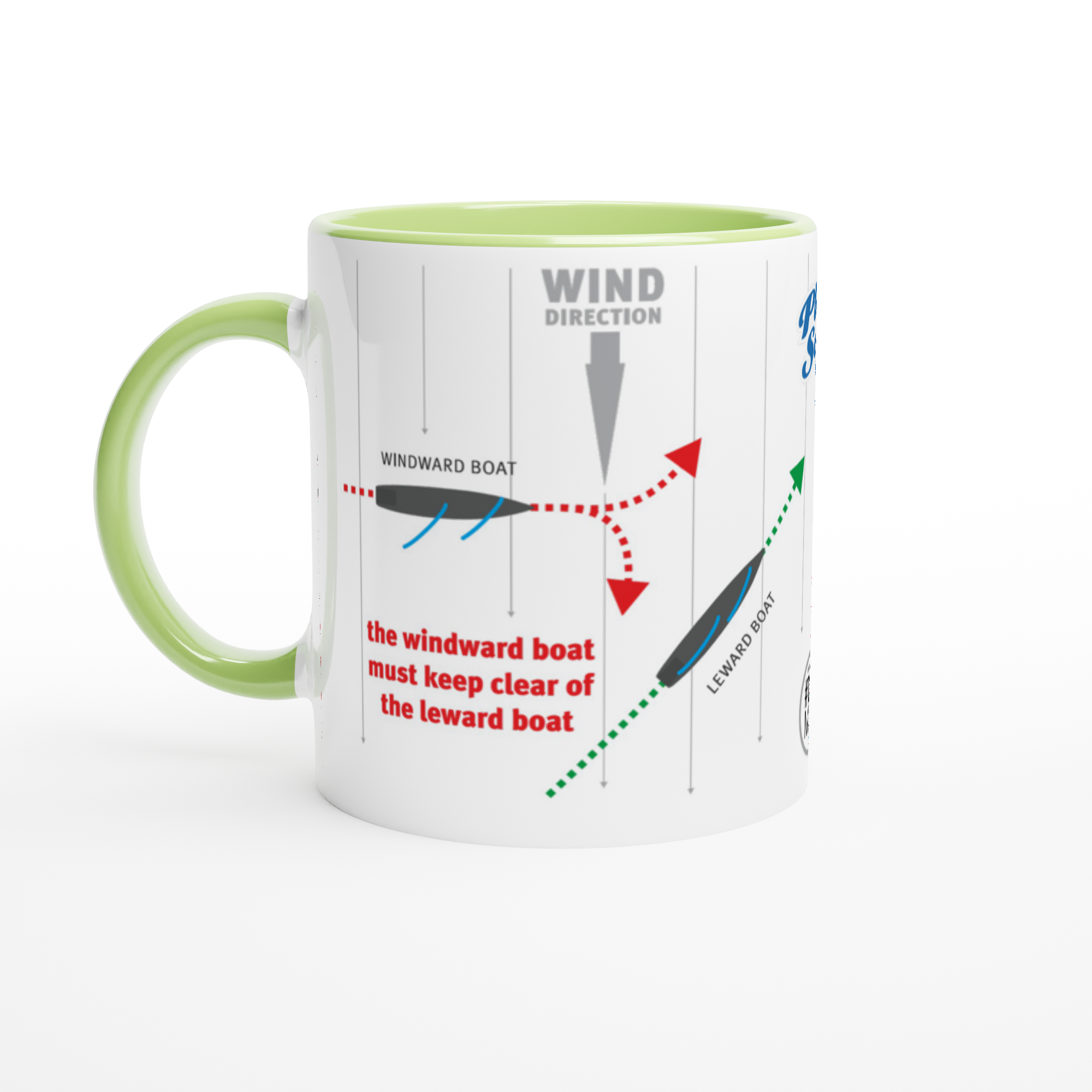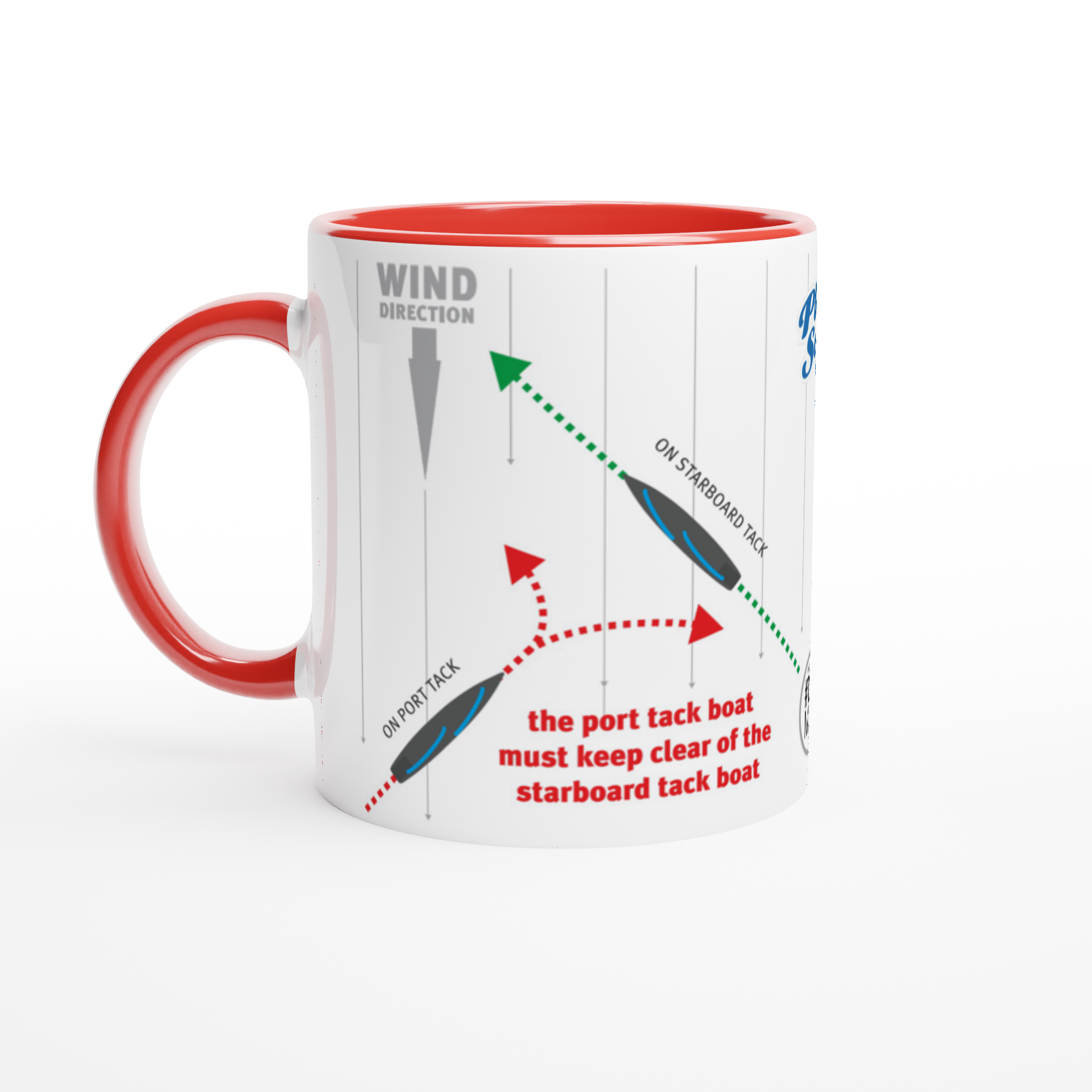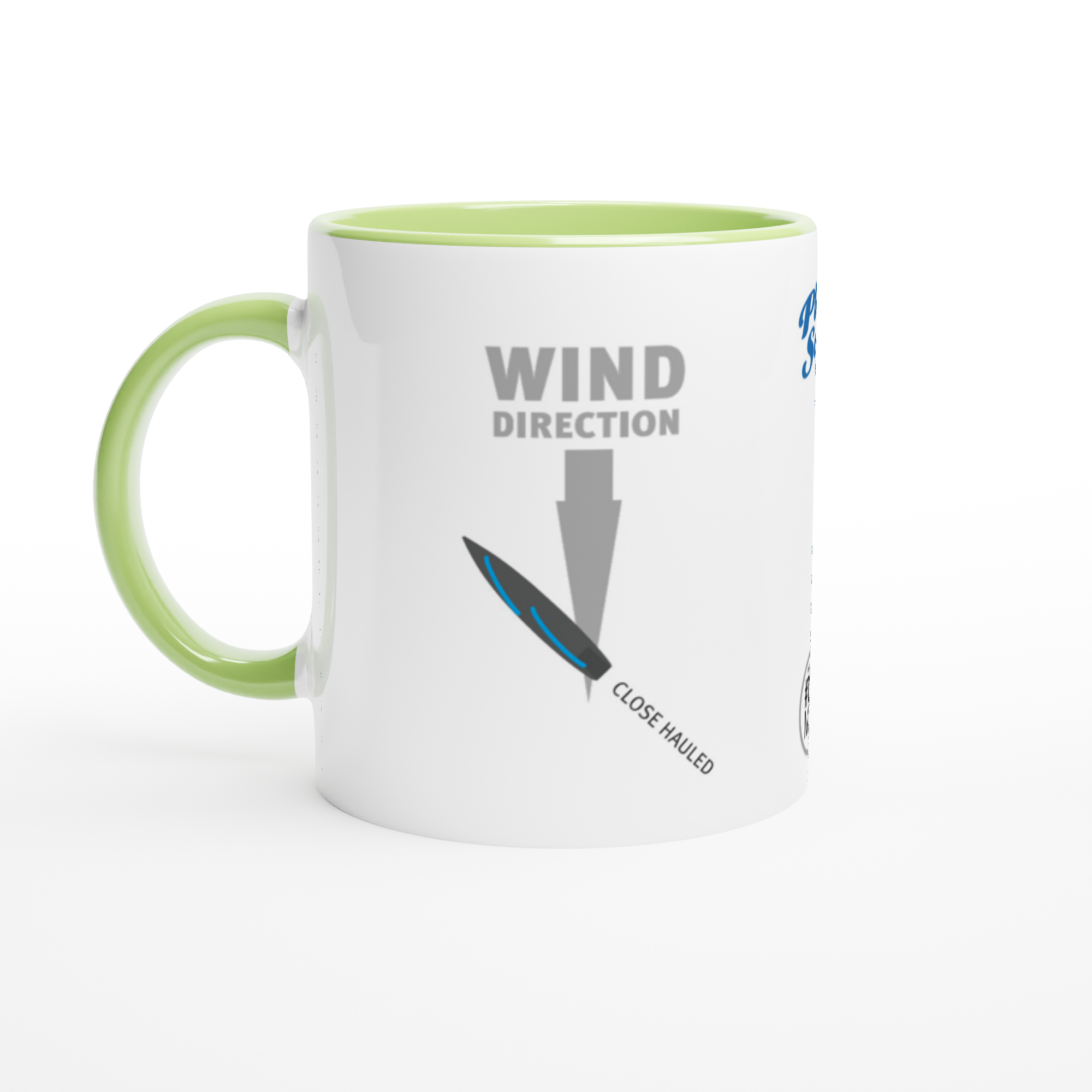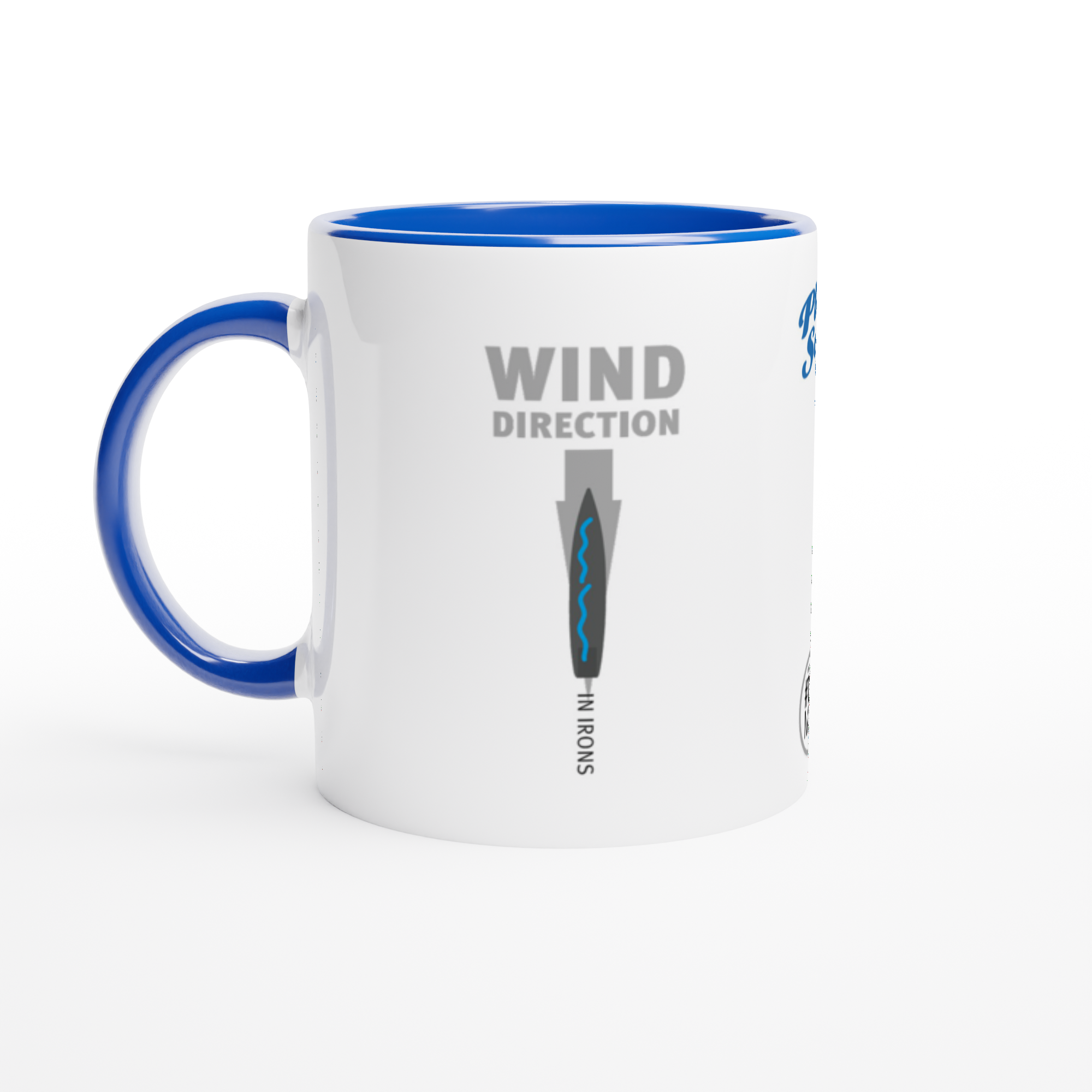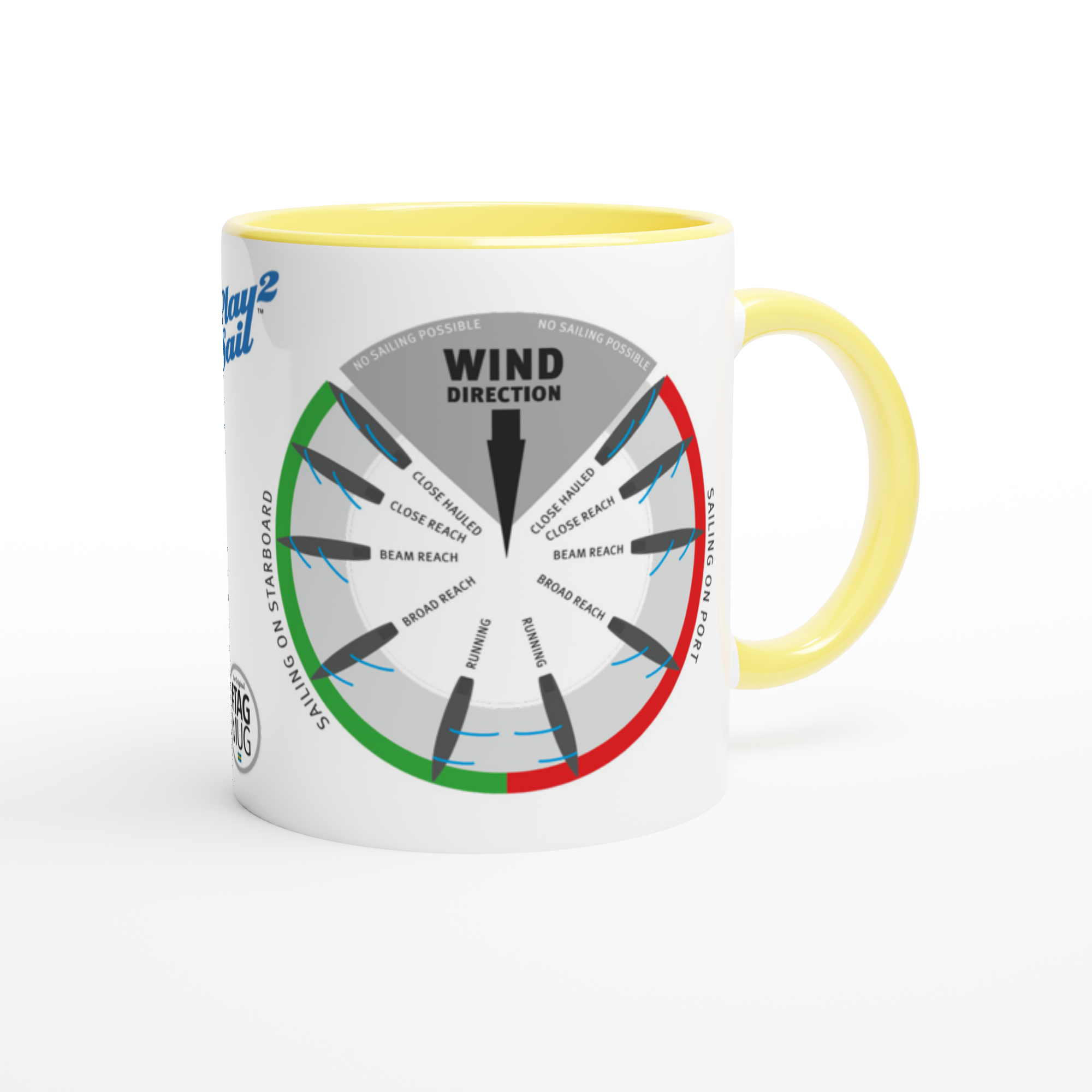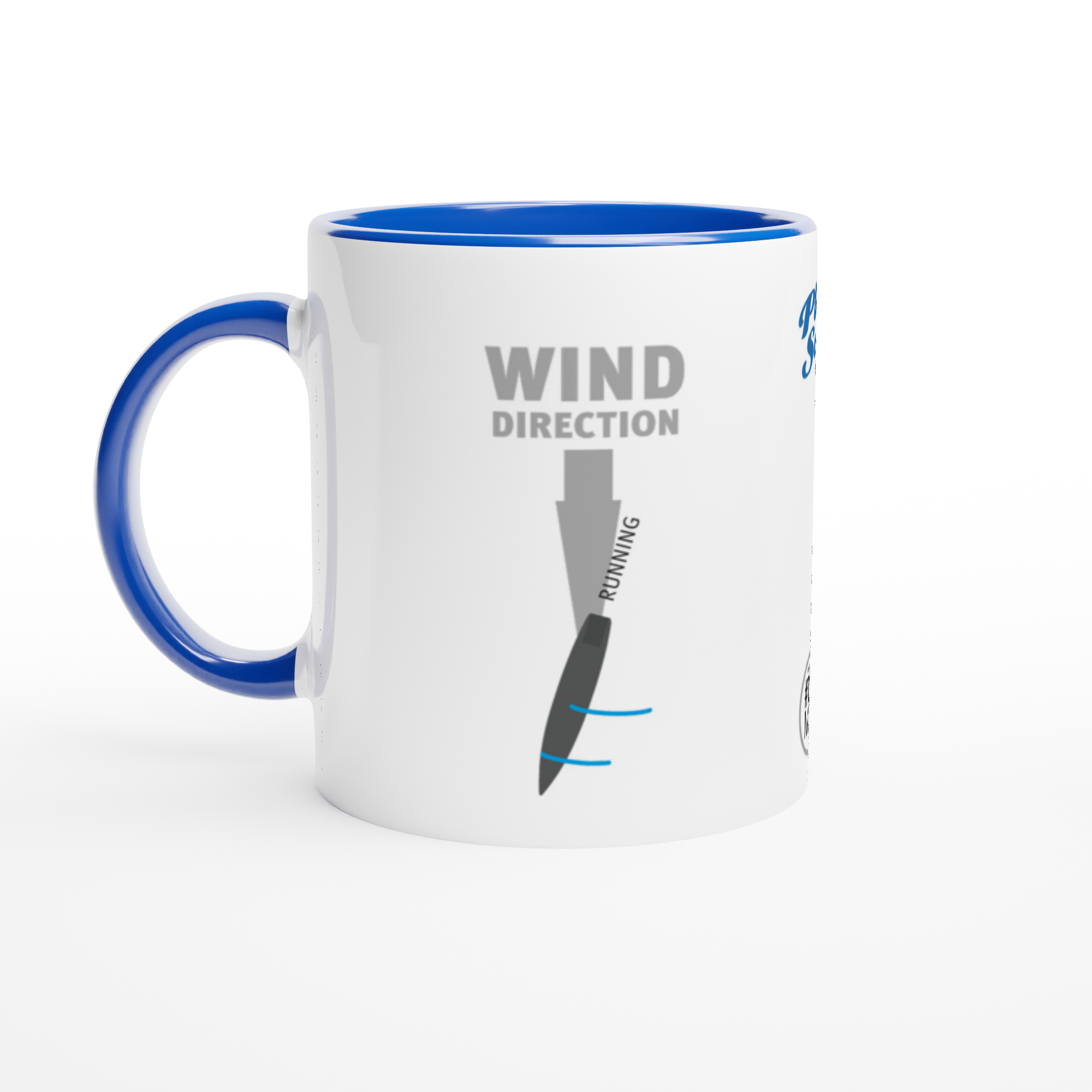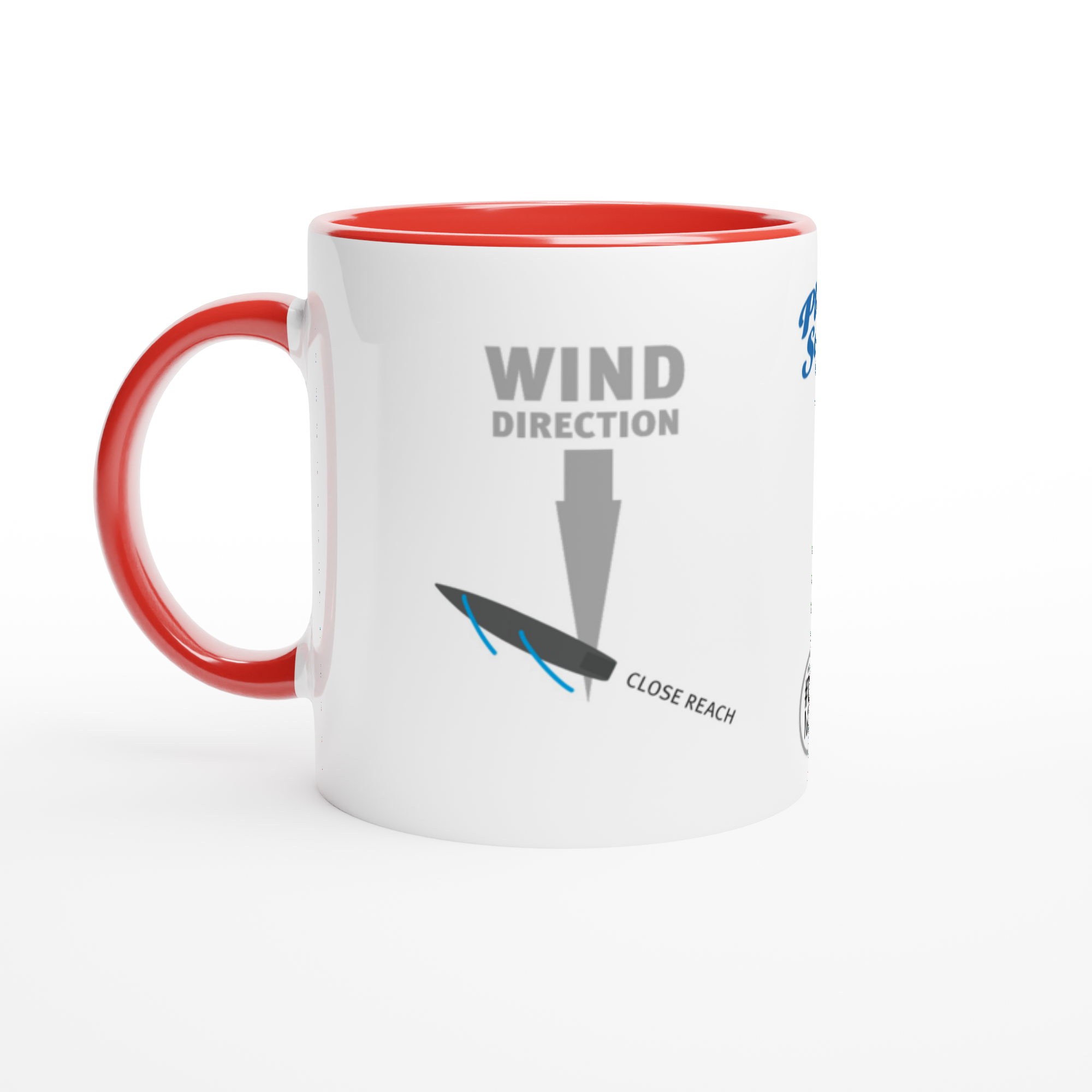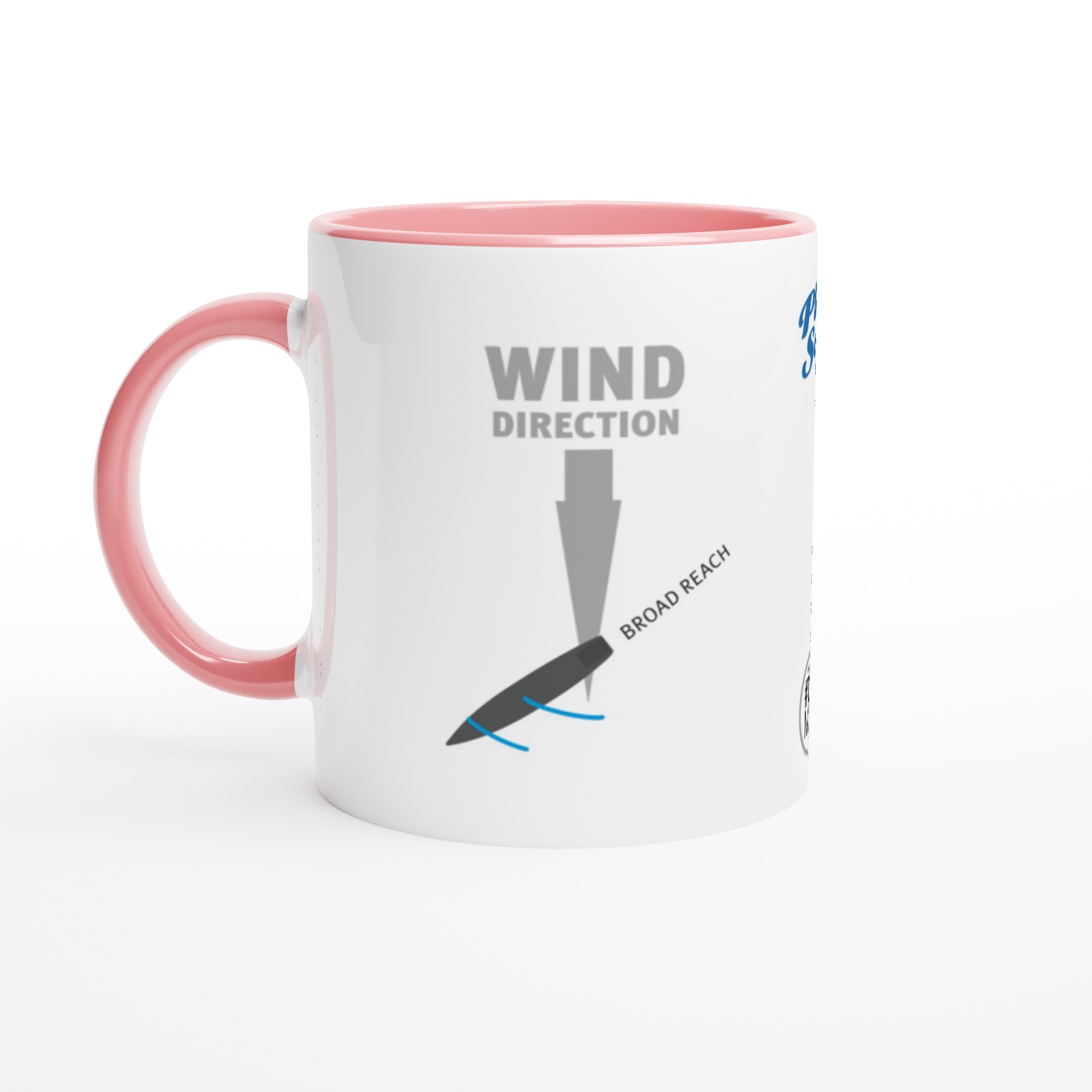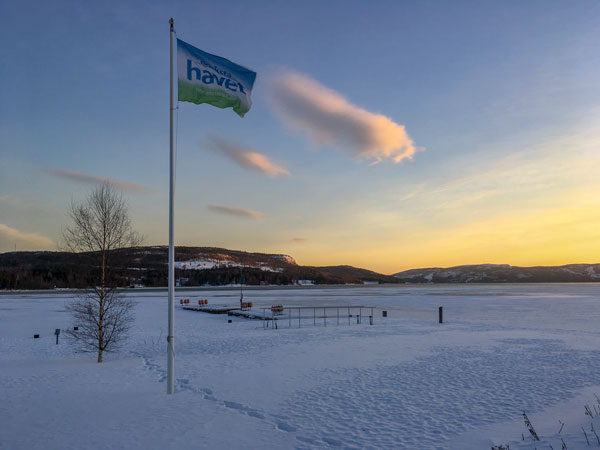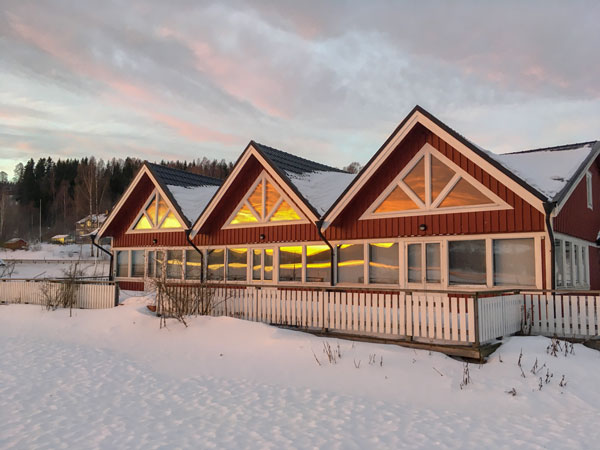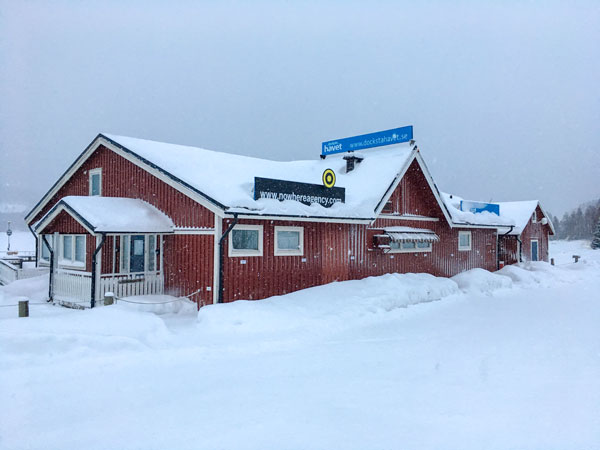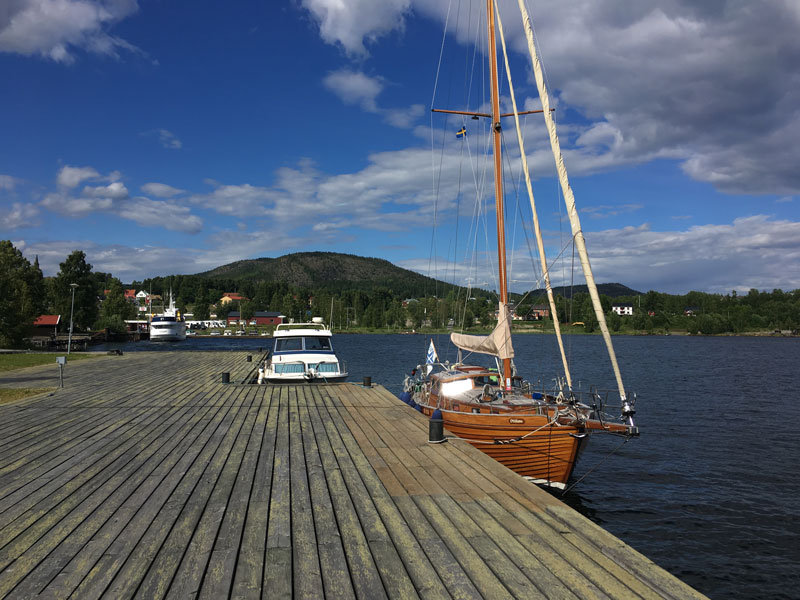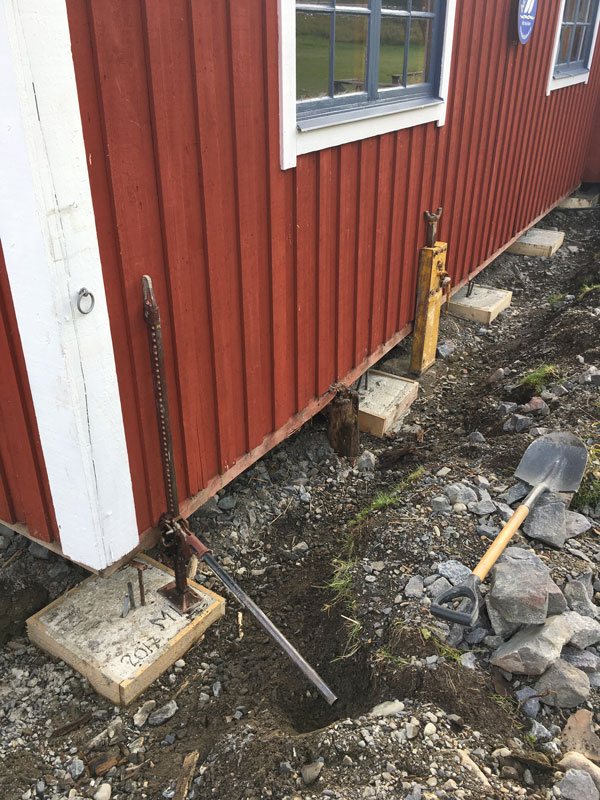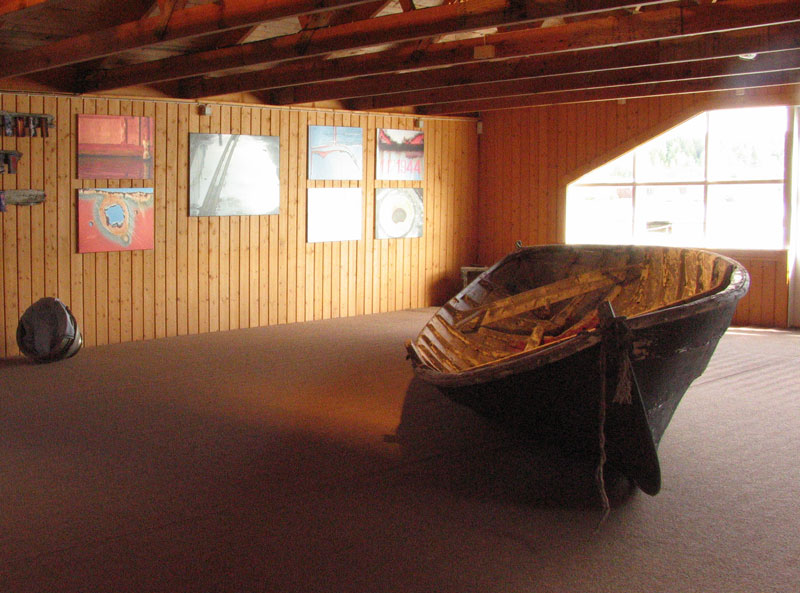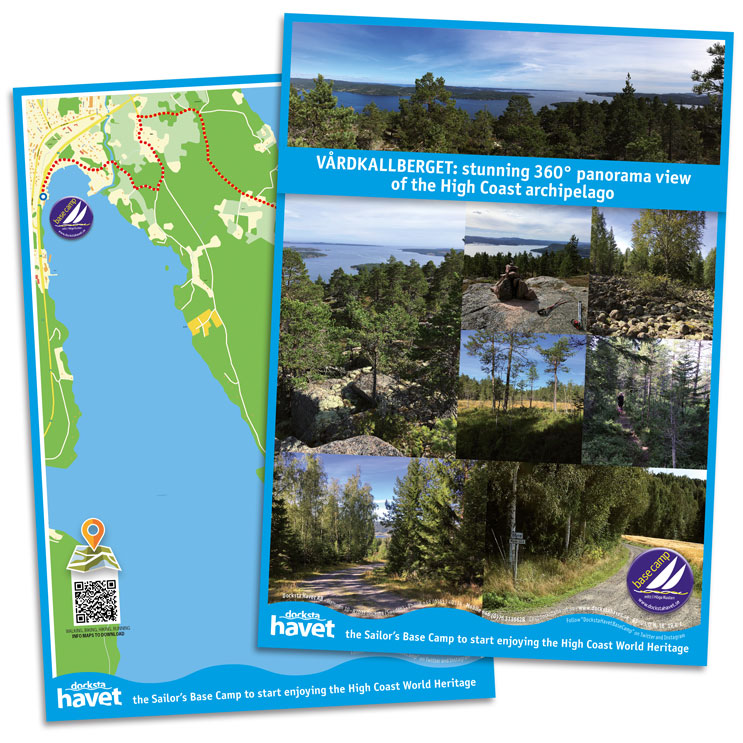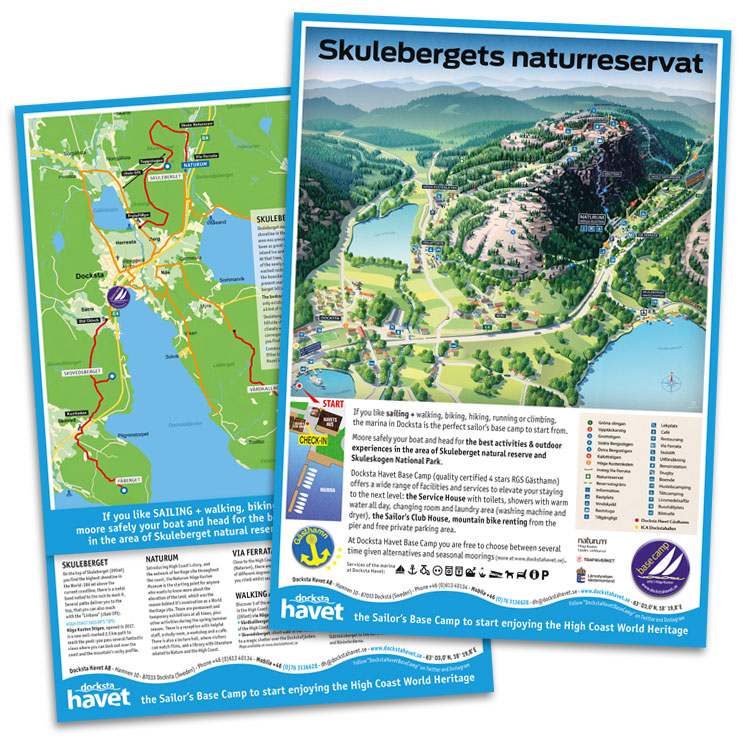A sailing race may have the purpose to reach a destination or, as per our radio sailing activities at P2S Arena, to race around a set of marks.
A regatta course consists of a start and finish line and legs separated by marks. The sailboats run the legs on different points of sailing in relation to the main wind direction - for a determined number of rounds of the complete course (usually one or two rounds, but sailors at the Play2Sail Arena are free to decide how to set their regatta).
The video gives you an overview from the pier of the Play2Sail racing area at Docksta Havet.
There are 4 different race courses for rc yachting in the Play2Sail Arena
“Olympic”, “Triangle”, Windward-Leeward” and the “Arena” courses are what we suggest to sailors to enjoy racing their radio yachts at the top of the fun.
Here you find a diagram for every course, that shows the location of the marks and the sequence they must be rounded, plus a short description on how to sail the legs.
For all the courses, the START is set into the wind. The starting line is an imaginary straight line (usually about perpendicular to the wind direction) between two marks. So, after the start, the first leg is always towards the direction of the wind: sailboats need beating to windward at a course of about forty-five degrees and tacking to reach the mark upwind.
The diagrams below show the racing course set for the prevalent southerly wind at Docksta Havet Base Camp.
Elevate your RC Sailing skills:
Free resources at your fingertips >
As a skilled sailor, you know the value of continuous learning. Access our advanced free online resources to refine your techniques and build your confidence with expert insights. No fees, no membership - just pure learning and fun. Discover Play2Sail Academy today!
For a comprehensive deep dive, our e-manual is available for purchase, offering in deep knowledge and expert advice to take your skills to the next level.
Sailing Learning made easy and simple: download the Play2Sail e-manual and improve your skills fast!
•
ARENA course
Description:
START from the Start/Finish line between the yellow marks
Sail upwind toward the Windward gate
Pass into the Windward gate sailing around either the mark 1 or 2
Sail downwind toward the Leeward gate
Pass into the Leeward gate sailing around either the mark 4 or 5
Sail upwind to cross the FINISH line
•
TRIANGLE course
Description:
START from the Start/Finish line between the yellow marks
Sail upwind toward the Mark 1
Keep the mark 1 on your left and sail toward mark 3
Keep the mark 3 on your left and sail toward mark 5, that you will keep to your left to
Sail upwind and cross the FINISH line
•
WINDWARD/LEEWARD course
Description:
START from the Start/Finish line between the yellow marks
Sail upwind toward the mark 1
Keep the mark 1 on your left and sail toward mark 2
Keep the mark 2 on your left and sail downwind toward the Leeward gate
Pass into the Leeward gate sailing around either the mark 4 or 5
Sail upwind to cross the FINISH line
•
OLYMPIC course
Description:
START from the Start/Finish line between the yellow marks
Sail upwind toward the mark 1
Keep the mark 1 on your left and sail toward mark 3
Keep the mark 3 on your left and sail toward the mark 5
Keep the mark 5 on your left and sail upwind toward the mark 1
Keep the mark 1 on your left and sail downwind toward the mark 5
Keep the mark 5 on your left and sail upwind to cross the FINISH line
Share your #SAILING passion with an original mug [#TAGMUG E-SHOP]
Dragon Force 65 sailboats running a leward leg of a racing course.
The racing rules of radio sailing set a sequence of visual signals and sound signals to warn sailors of the departure of a regatta. We suggest you this reading: how to become confident with the starting procedures of a radio sailing regatta >
If you like practice your maneuvers or compete against your friends, race or just sailing the provided course rounding the marks is a top fun sailing experience: you will learn a lot, improving your skills in all the conditions.
Enjoying our free RC sailing learning tips?
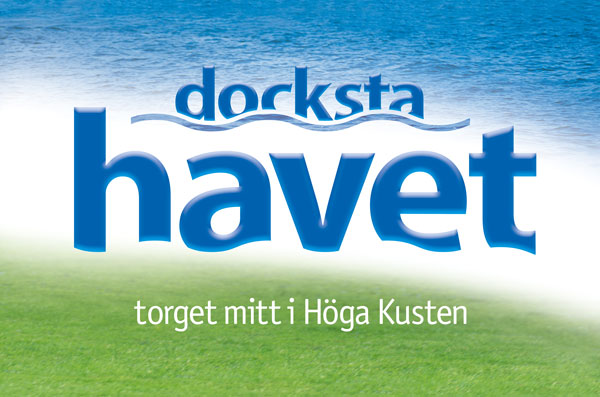
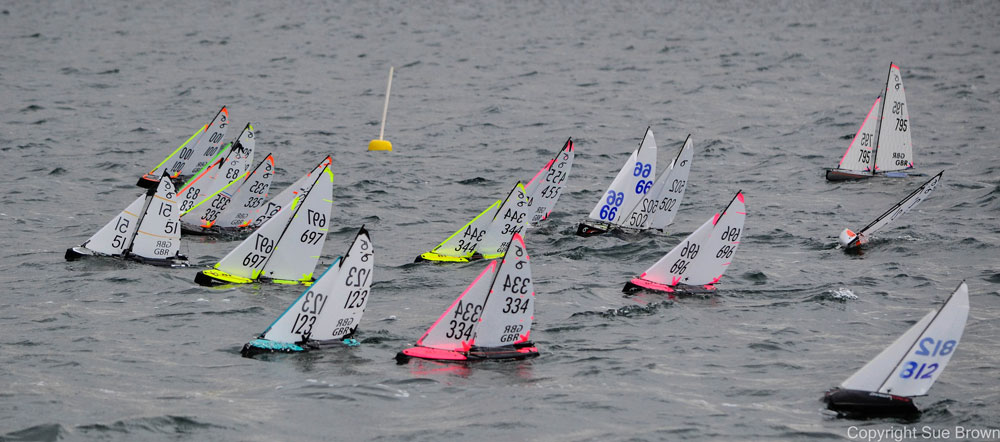


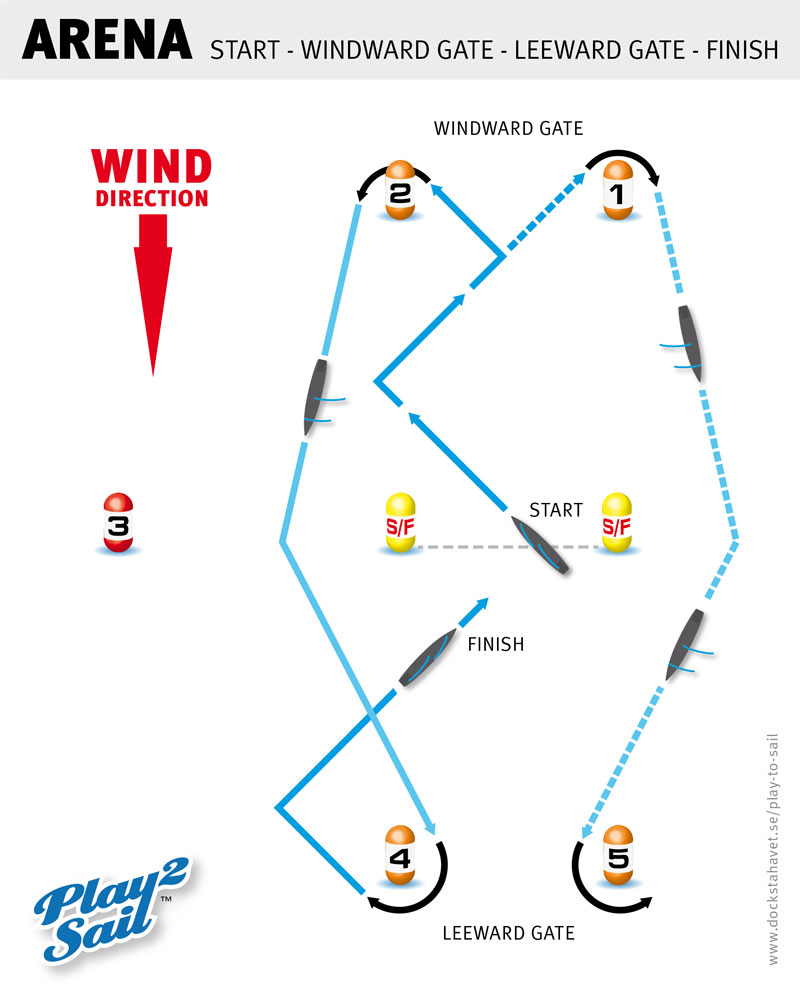



![Share your #SAILING passion with an original mug [#TAGMUG E-SHOP]](https://images.squarespace-cdn.com/content/v1/594e2defd482e9221abc3588/1614718713634-9MZAQNL35U0Z5DDDC7MA/sailing-racing-courses-ceramic-mugs-collection.jpg)




